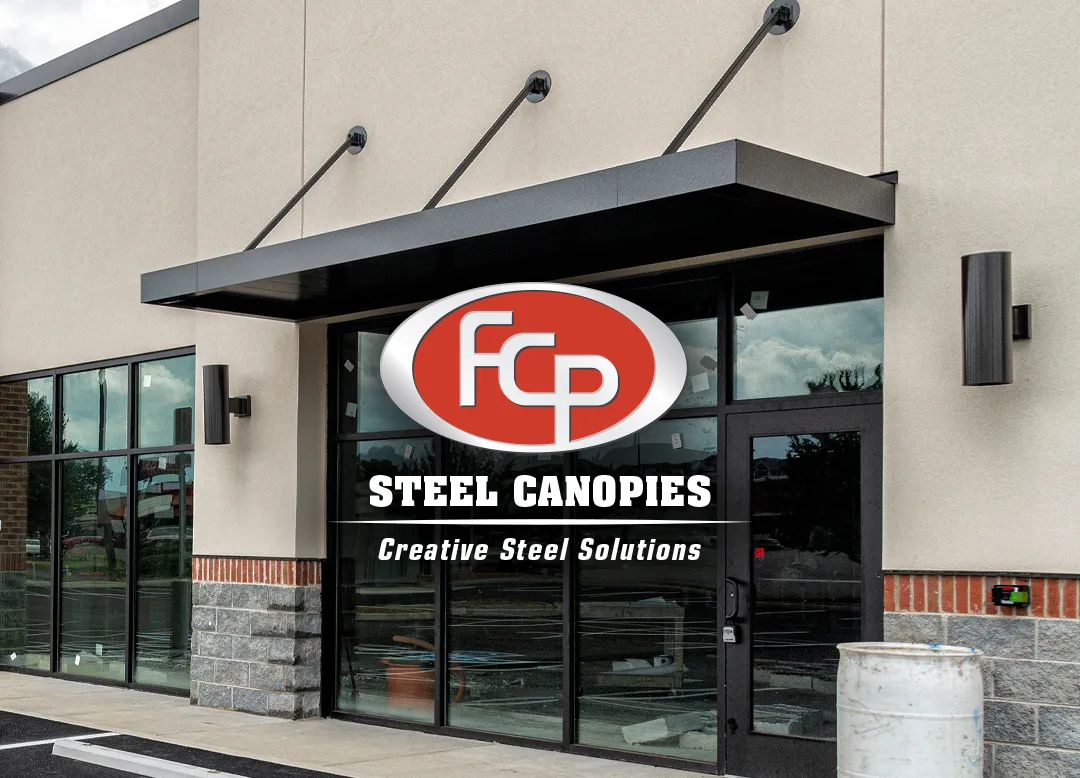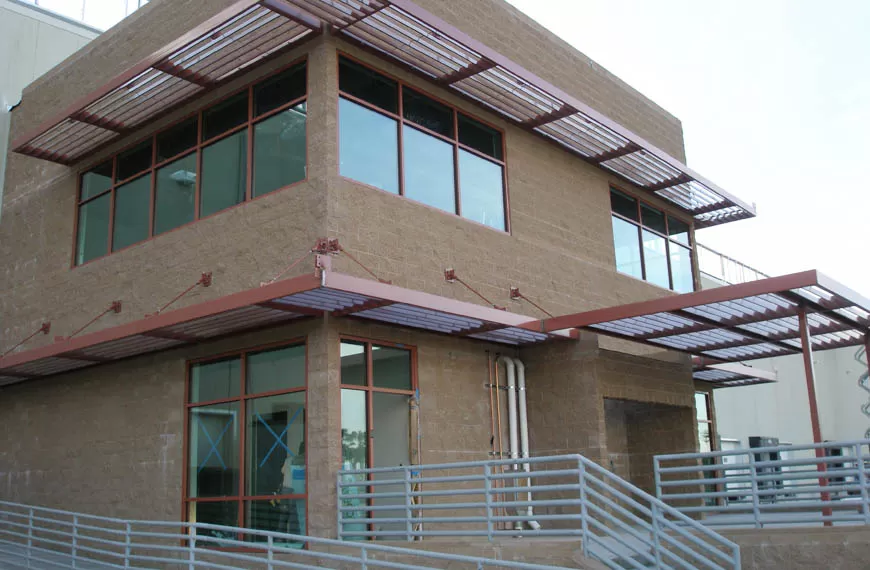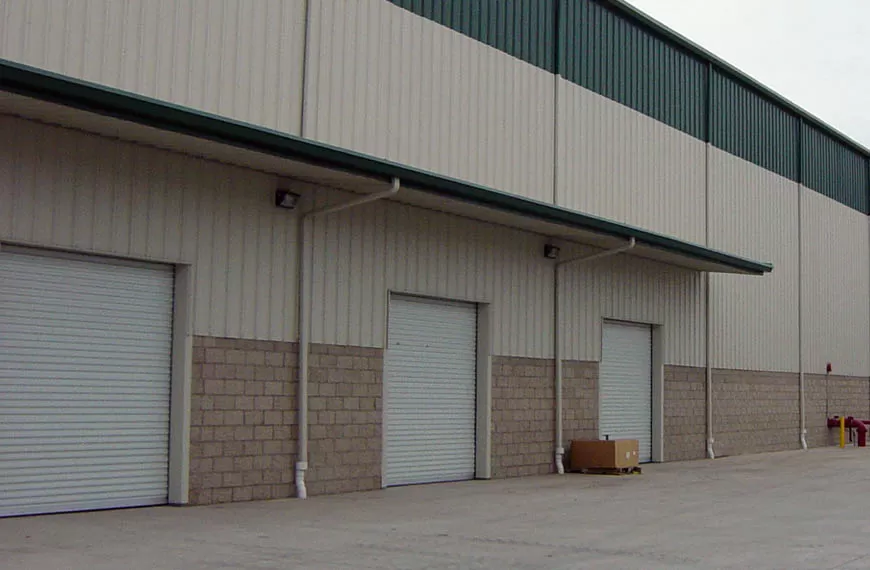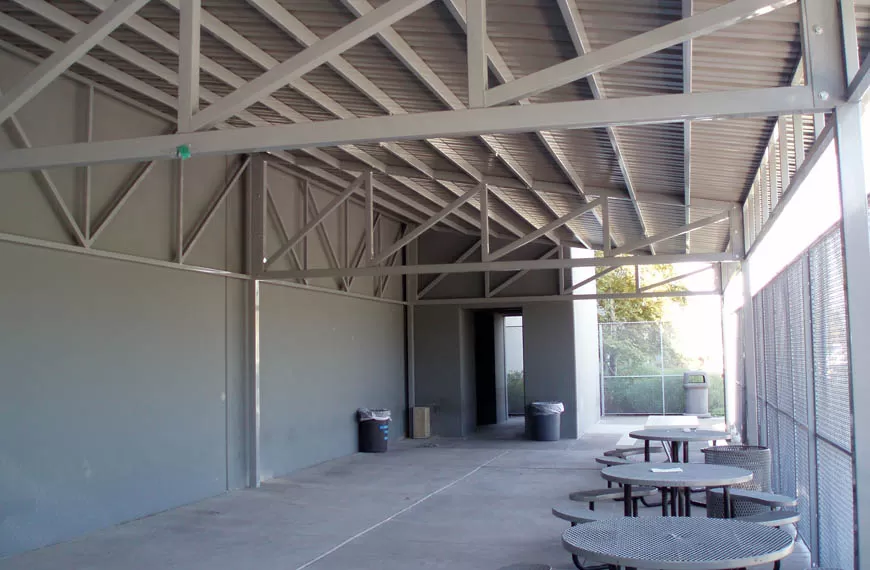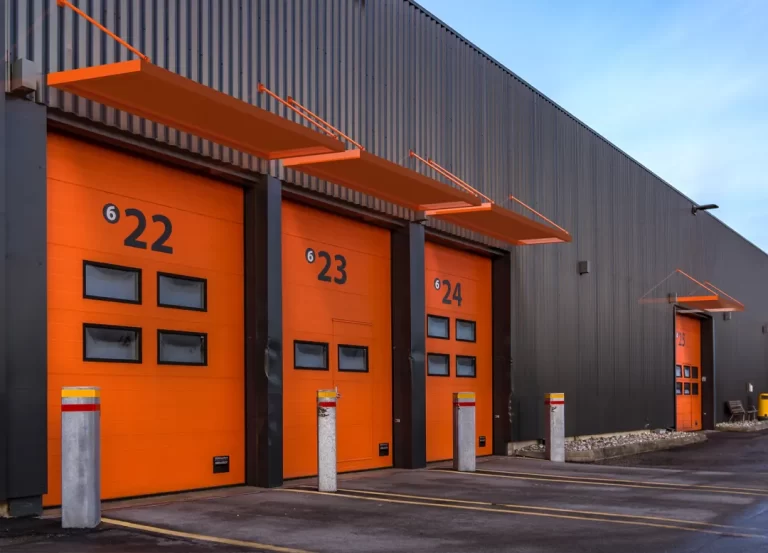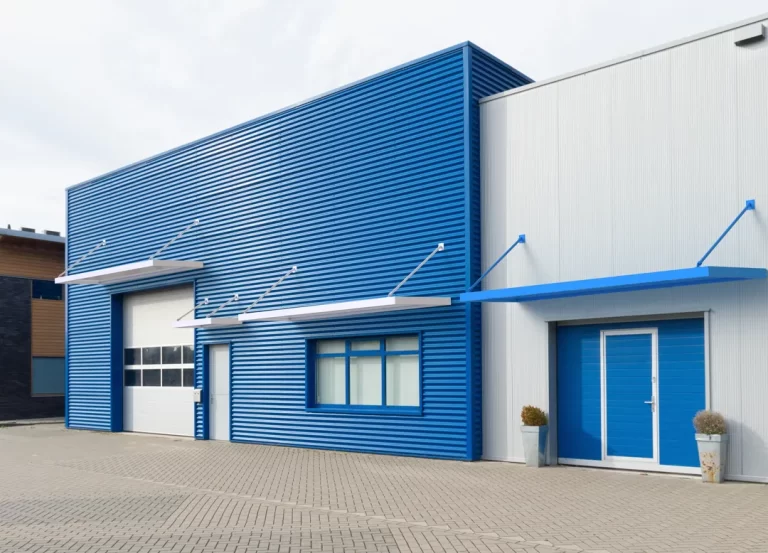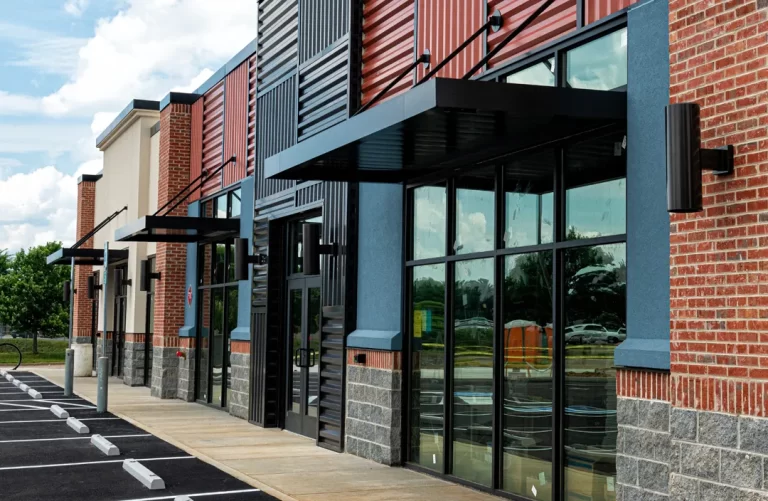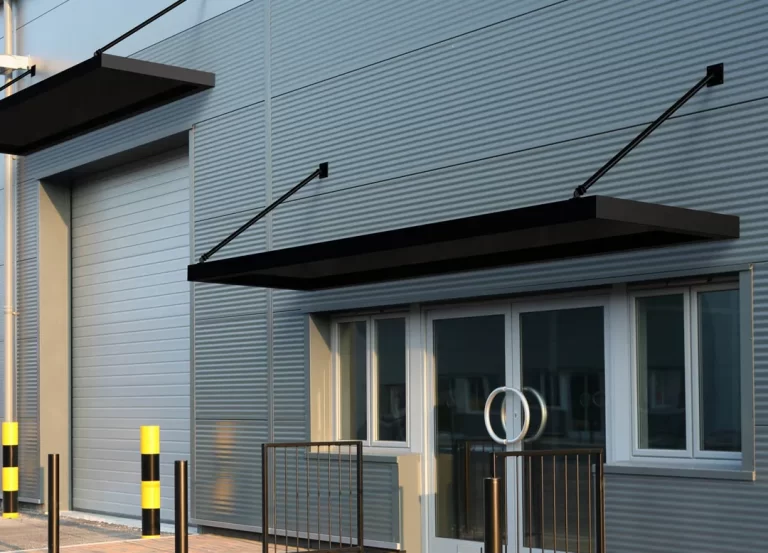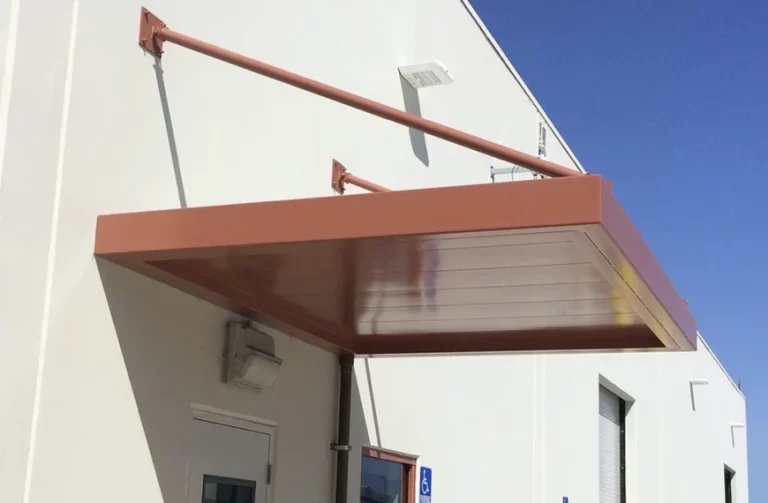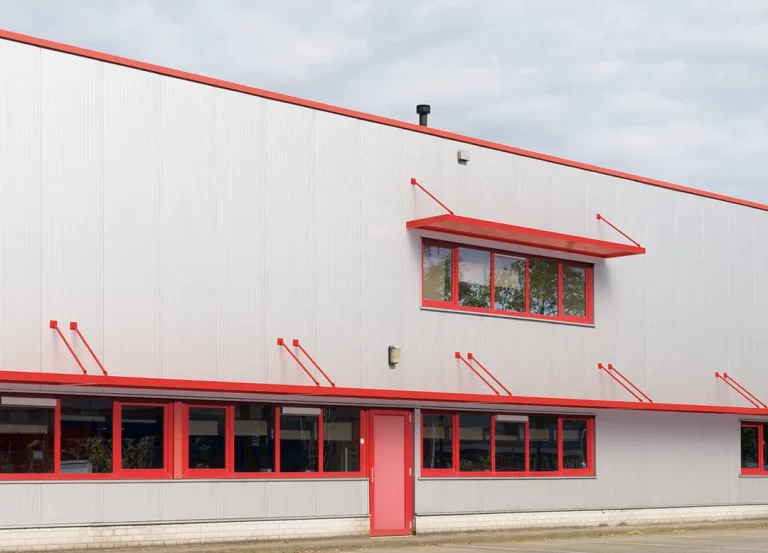A Guide to Entrance Canopies – by FCP
Choosing the best entrance canopy for your building starts by understanding the pros and cons of each canopy method. In this article, “A Guide to Entrance Canopies”, by FCP, we’ll cover functionally requirements, construction and attachment considerations, material durability and longevity, aesthetic preferences, and of course cost considerations. Read on to learn more.
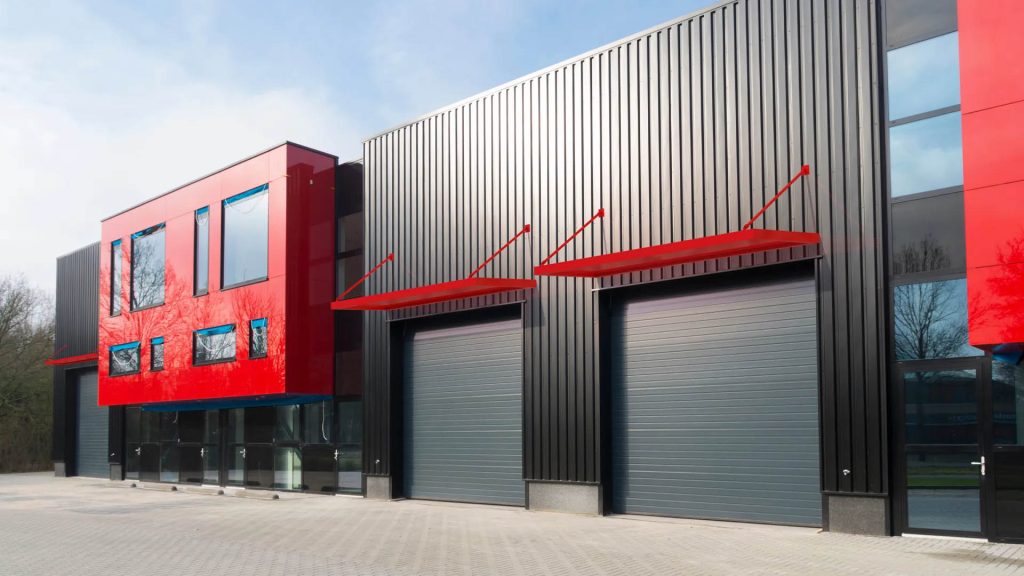
FCP’s Comprehensive Guide to Entrance Canopies
Are you looking for a way to enhance your building’s overall look and appeal while protecting people and assets? Want to spruce up the entranceway with something that is both practical and stylish? Entrance canopies are a great way to do just that! Whether you’re a construction company, contractor, building owner, or architect looking for an interesting addition to your project, entrance canopies provide beautiful protection from outdoor elements while enhancing the aesthetic appeal and value of the property. In this article, we’ll give you the information you need about the different types of canopy shelters so you can make an informed decision on which structure is suitable for your project.
The first thing to consider is functionality. What will the canopy be used for? For example:
- Is it purely for aesthetics, to add architectural interest and add property value?
- Does your entrance way need to protect people and assets from the elements?
- Are you looking to lower cooling energy costs from sun exposed windows?
- Is it to provide shelter in a loading and unloading area such as loading dock or receiving entrance?
- Or perhaps you need a covered outside area to store equipment or for maintenance and manufacturing tasks that are better suited for outdoor areas.
The second thing to consider is material. Your aesthetic preference, weighed with short-term vs long-term cost investments, are going to be leading factor in determining choice. A Guide to Entrance Canopies materials include:
- Textile materials – Pros – less expensive. Cons – they are not durable to extreme weather. They have a short life span and need replacing. Harder to clean.
- Wood materials – Pros – also less expensive. Cons – require maintenance such as painting or staining. Susceptible to rot and insects. Combustible fire hazard.
- Aluminum – Pros – lightweight so they can span longer distances. Easy to maintain. Cons – Expensive, not as durable as steel. May collapse under extreme wind or snow loads.
- Steel – Pros – Unmatched strength of steel outperforms other materials. Non-combustable. Virtually no maintenance. Cons – initially they can be more expensive than textile or wood, but durability and longevity are compelling reasons to consider.
Lets take a CLOSER LOOK at the different types of Canopies materials. A Guide to Entrance Canopies by FCP.
Textile Canopies
When it comes to providing shelter to entrances, textile canopies or awnings can be a cost-effective solution. They offer a variety of design options, are lightweight, easy to install, and can provide a temporary solution or for seasonal use. However, it is important to note that textile canopies aren’t very durable, can be easily damaged by harsh weather, and are not much good at handling heavy snow loads making them only good for seasonal use in many regions. As such, while the initial cost may be lower, they may need to be replaced more frequently than other types of outdoor shelters and you may end up spending much more over the long-term.
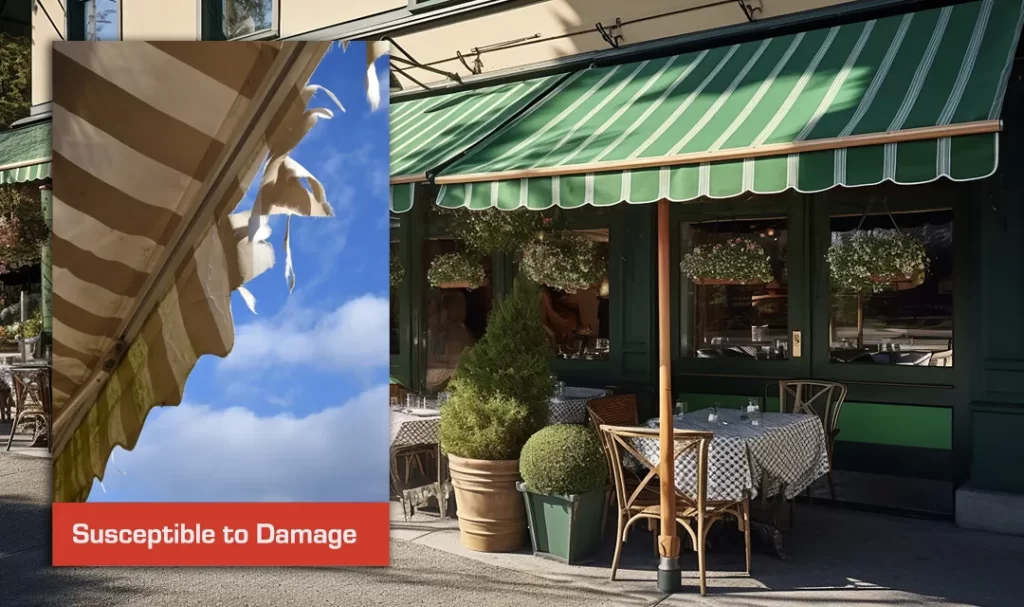
Wood Canopies
Wood canopies and awnings are often chosen for their affordability and natural look, but they come with their own set of challenges. While they may seem like a good investment at first, wood structures are not as durable as steel and require frequent maintenance like painting or staining. They are also susceptible to damage from rot and insects, which can be costly to repair. Additionally, wood is combustible and can increase the fire hazard of your property. For those looking to balance cost-effectiveness and durability, alternative options like metal or steel canopies may be a better solution.
Aluminum Canopies
Aluminum canopies and awnings have become an increasingly popular choice in recent years due to their lightweight construction, which allows them to span larger distances. However, while they offer lightweight benefits, these structures are not as durable as steel. One potential downside is their susceptibility to damage or even collapse under heavy wind or snow loads. This means that they may not be the best choice in areas that experience extreme weather conditions.
Steel Canopies
Steel canopies, on the other hand, offer a highly durable and modern feature that add a sleek and sophisticated look to any building. One of the main benefits of steel canopies is the unmatched strength of this material, which provides exceptional protection from heavy wind and snow loads. Additionally, the modern design of steel canopies greatly enhances the architectural appeal of a building, making it look more contemporary and sophisticated. Overall, steel canopies are a great investment for any property owner looking to add both style and protection to their building. Aesthetics, durability, and longevity are all compelling reasons to consider a steel canopy.
Let’s Dig Deeper – Types of Canopy Structures and Cost Considerations – A Guide to Entrance Canopies by FCP.
Architectural Canopies
Architectural slat or pergola style canopies are a great way to add a stylish touch to your building’s exterior. However, while they may look appealing, they do little to offer protection from harsh weather elements such as sun exposure, rain, or snow.
Free-Standing Canopies
Free-Standing Canopies are a popular solution to protect outdoor equipment and other assets, or to provide a better work or production environment. These canopies provide ample coverage to ensure that the equipment or workers remain safe from the elements. However, the columns or posts require attachment to the surface, which could require concrete work. Additionally, posts or columns used to support the canopy may impede foot or vehicle travel below. Despite these drawbacks, Free-Standing Canopies offer a versatile solution for outdoor needs and provide protection when weather conditions are less than ideal.
Building Attached and Cantilever Supported Style Canopies
Building attached canopies can be engineered to fit new construction or a pre-existing roof style, and cover an area of virtually any size. There are fully cantilevered system that do not need suspended supports back to the building, however these systems are typically limited to small applications like an entry way or a window because they lack the structural integrity to support large spans. The exception would be a custom structure that requires special structural engineering, and would not be a cost-effective solution for most canopy applications.
Building Attached Post or Column Supported
Building attached supported (post or column) canopies can also be designed to fit new construction or pre-existing buildings, and cover an area of virtually any size. This makes them an idea solution for shade shelters, loading docks, and receiving areas. They do have the same drawbacks as free-standing canopies; the post or column can impede on foot traffic below the canopy, and the need to attach to the surface may require concrete work. However, since there are virtually endless design and color options, they can be customized to meet even the most demanding requirements.
Suspended Canopies
Suspended Canopies are the perfect addition to any new or existing building entrance, loading dock or receiving area, window, or walkway. These industrial steel canopies offer protection for people and assets while maintaining a sleek, clean, and modern design. Unlike traditional canopies, Suspended Canopies require no posts or columns, eliminating any obstructions that could impede foot or vehicle traffic below the canopy, as well as eliminating material and labor installation costs. Pro tip – look for suspension steel rod suspended canopies over chain or cable systems. Steel rods are stronger and there rigidity protects the canopy from updrafts. Whether you’re looking for a way to enhance the appearance of your building’s entrance, save energy costs from sun exposed windows, or provide shelter for your walkways, Suspended Canopies offer a cost-effective and visually appealing solution. Their streamlined design paired with their practical protection make them a great investment for any property owner.
Closing Statement
When it comes to canopy systems, there are plenty of options on the market. So why choose FCP industrial steel canopies? For starters, FCP specializes in industrial steel canopies and prioritizes safety and structural integrity. Even if your project doesn’t have a building code to adhere to, FCP still recommends designing and stamping your canopy structure by a licensed engineer to ensure it meets the necessary application standards. Additionally, FCP includes gutters and downspouts in their designs, which is something that many competitors neglect. At the end of the day, when you choose FCP, you can trust that you’re investing in a quality product that is built to last and designed with your specific needs in mind.
To learn more about Industrial Suspended Entry Canopies, call us and speak to an FCP design consultant at 805-684-1117
Regular business hours Mon-Fri 8am-5pm (PST). For after hours please use our contact form.
